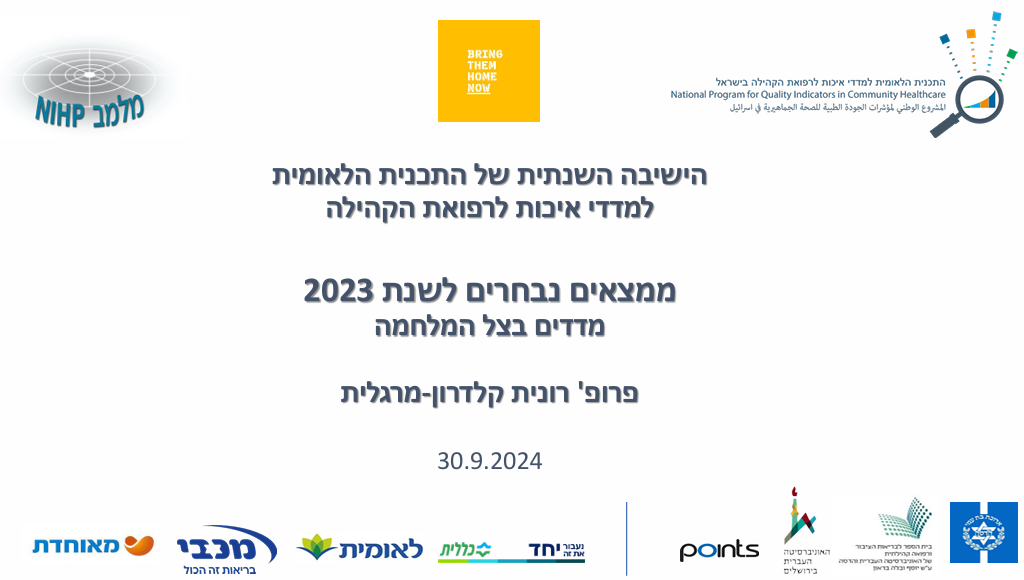The National Program for Quality Indicators in Community Medicine aims to provide the public and policymakers with information on the quality of medical care provided by health funds in various fields, with the aim of improving and benefiting the medical service provided to Israeli residents.
To achieve this goal, the program publishes annually at the national level the results of a series of community care quality indicators . This monitoring allows for the assessment of developments in the quality of care over time and the identification of areas requiring intervention and improvement, both in the field of information systems and data collection and in the field of health services themselves.
Starting in 2023 , a Health Disparities Report was published for the first time as part of the National Health Disparities Program. The report, which includes 2021 data, presents trends in selected indicators by socioeconomic status and by district of residence.
The data presented to you is made possible thanks to fruitful cooperation between the four health funds and funding from the National Institute for Health Services and Health Policy Research in Israel .
The program's indicators are divided into nine areas and are carefully selected, based on international experience and literature, in consultation with teams of clinical experts, and by consensus among health plan representatives on the program's steering committee. The calculation of the indicators undergoes strict internal and external control processes.
Click on the areas to view the metrics.
The new data for 2023 includes follow-up data to the first published report (for 2021 data) and, for the first time, also data by population group (Haredi, Arab, or general) and data on the consumption of sleeping and sedative medications and antidepressants.
The National Program for Quality Indicators for Community Medicine publishes data each year that allows for the examination of compliance with quality indicators in a particular year, as well as the assessment of gaps by gender, age, socioeconomic status, and region.
Following the events of October 7 and the Iron Sword War, starting in 2023, the production of the program's indicators includes the Western Negev cluster as a separate wing. The rates by residential district can be seen on the maps' publications page or in the annual presentation .
An analysis of changes in index rates between 2022-2023 relating to residence on the conflict lines, as well as an analysis of gaps by population group (Arab, Haredi, and other), will be published in the Health Gaps Report soon.
